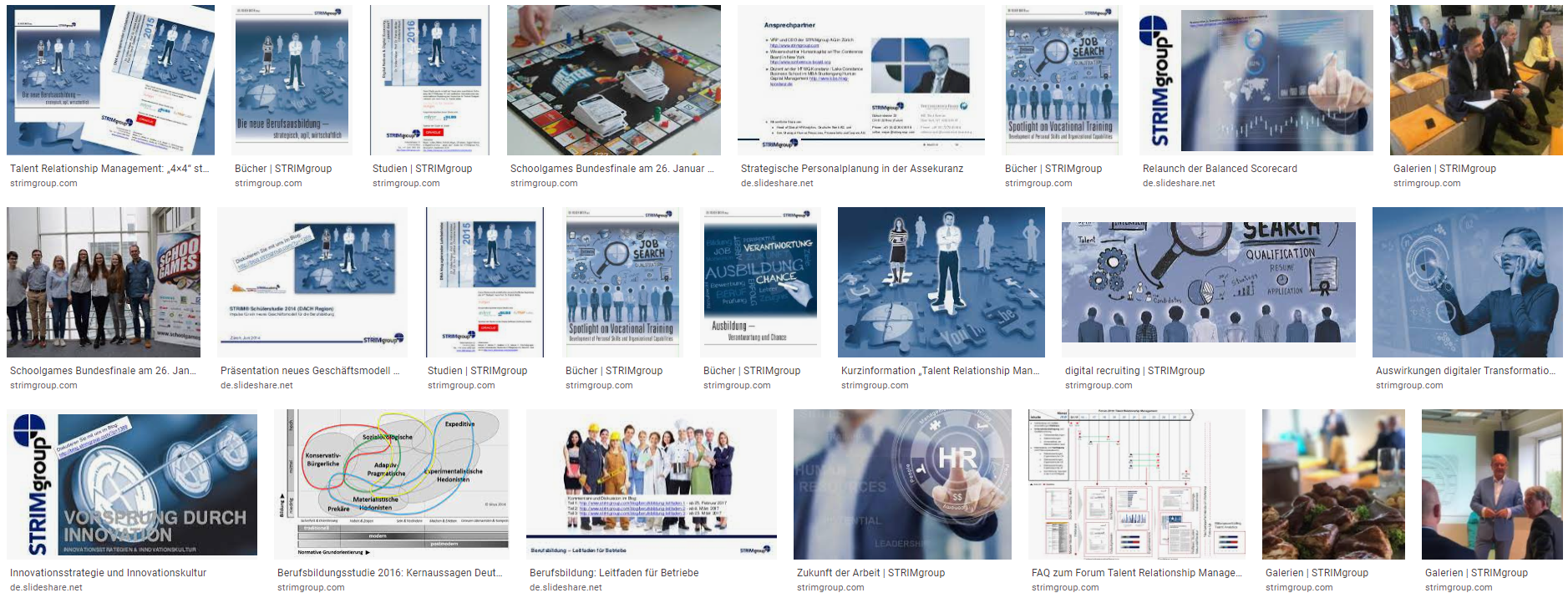The trigger for this article is a study by the German Economic Institute from 2021 (in German), which I recently read and which has been on my mind ever since.
The challenges and solutions described in this study concern me from the perspective of an HR strategist who asks the following questions, among others:
- As leaders and HR managers, have we understood the current situation in Germany – within and around our companies?
- When the facts are clear; what goals are we striving for and how?
- Are we willing to learn the necessary skills if we don’t already have them?
Four disruptive trends
The aforementioned IW study 2021 describes four disruptions; Digitization, decarbonization, demographics, and de-globalization.
Innovations are necessary for the success of digitization and decarbonization. This structurally increases the need for STEM workers, although their supply is declining due to demographic change.
In the next ten to 20 years, i.e. by around 2040, this change will lead to a significant decline in the supply of skilled workers in Germany – especially in the STEM field. I go into the exact figures in the second paragraph.
What are the goals, what are the measures?
Goals
This results in clear objectives for education policy:
- Focusing on digitization potential – also in education,
- promotion of STEM skills,
- Improving educational opportunities through good all-day schools, and
- Expansion of further academic training at universities.
Facts and deductions
In the next five years, securing skilled workers will be of great importance. This has so far been kept at a relatively high level thanks to a sharp rise in the employment rate among 55 to 64 year olds, women and immigrants. However, the momentum will increase due to the transition of the baby boomer cohorts into retirement.
The unanimous conclusion of all experts – EFI, SVR, IW, BIBB, IAB – is: Skilled labor shortages threaten, especially in the STEM qualifications!
According to calculations by these experts
- the supply of academically trained experts for complex activities will increase from 6.4 to 8.6 million between 2020 and 2040.
- In return, the supply of workers for specialist activities is likely to fall from 20.7 to 18.3 million.
- The workforce for complex specialist activities would also decrease, from 12.9 to 12 million.
Role of strategic workforce planning and in particular of vocational training
It should be noted that academic qualifications are not the only drivers of innovation. Dual vocational training also plays an important role. According to the IW study 2021, the annual need for replacements in the STEM area is increasing, even more so for professionally qualified specialists than for academics! To achieve this, more women would have to be won over to train or study in the STEM subjects.
We know: Necessary measures with regard to STEM qualifications must be taken at school age and therefore only have an effect in the long term. So it’s high time to put words into action if we don’t want to miss the “innovation train”.
Companies have therefore been dealing with strategic workforce planning for many years. There is sufficient evidence to ensure that these projects are set up correctly and lead to good results. A current example is the Australia and New Zealand Banking Group (ANZ), which uses scenario planning and forecasting models in the Technology Division, among others, to improve workforce planning and make better decisions.
Numerous own studies and books in the context of vocational training with creative practical examples from BASF, John Deere, Lufthansa Technik, Siemens and many more prove their great importance – especially with a view to STEM skills and jobs.
A few months ago, McKinsey briefly and concisely summed up the latest findings in the article “Getting skills transformations right: The nine-ingredient recipe for success”. Nevertheless, the quality of the results with regard to STEM qualifications is absolutely insufficient to date, both quantitatively and qualitatively.
“The last mile” is missing!
Once again, we obviously don’t have a knowledge problem, but an execution problem.
The static and often complex dashboarding tools that have been developed and deployed over the past decade will become useless in the coming decade. In addition, technology is only one aspect of realizing the full potential of data. People, process and culture remain critical elements of any successful workforce analytics initiative.
With modern self-service analytics, managers of a division or business area are able to plan their business and the necessary resources on the basis of valid data in a short time and with moderate training effort. They increase the speed, efficiency, accuracy, and confidence in the insights they gain from customer, business, and people data. After all, they are also responsible for the success of the implementation!
In numbers: A survey by HBR revealed a significant increase in customer loyalty/satisfaction (41%), employee commitment (36%), and product and service quality (32%). In addition, respondents reported significant gains in productivity (28%), innovation (26%), revenue growth (22%), market position (21%) and profitability (17%).
The prerequisite for such results is “the last mile”. This is where decisions are made as to which findings are to be pursued further and implemented in concrete measures. Brent Dykes vividly argues in his post “Data Analytics Marathon: Why Your Organization Must Focus On The Finish” that many organizations “don’t finish the race completely.” After the data collection, preparation, analysis, and insights gained, “it’s more likely that they get out and start a new race than running a whole marathon to the end. As a result, they keep running but never finish anything.” – unfortunately a common problem in strategy execution!
Let’s ask ourselves: where are we in the race for the urgently needed STEM skills? Do we still have our goal in mind? What do recruiting, vocational training, continuing education and employee retention do to ensure that we finish the race successfully?
Conclusion
Due to demographics, digitization and decarbonization, the needs in the STEM professions will continue to increase in the future. STEM skills are particularly important for innovation, but there is a shortage of STEM professionals.
Too many organizations still pay lip service and carry the word “strategic” around as an alibi. But to be consistently data-driven and on-target, people at all levels of the organization need to change and run to the last mile.



Leave A Comment